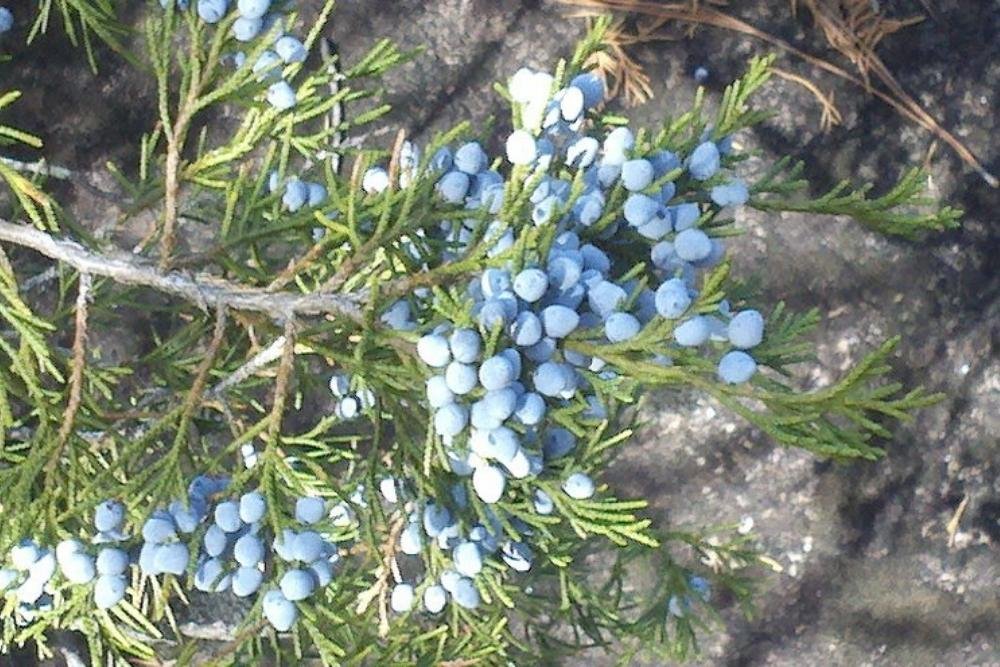Eastern Red Cedar
Scientific Description: Eastern Red Cedar is a confusing name for this species, since it’s a juniper, not a cedar. Juniperus virginiana is native to the eastern half of the United States and southeastern Canada. Many of us have seen this tree around our neighborhoods or along roadsides but may not have paid much attention to it. However, it’s a valuable member of our flora.
This species can grow to 40 to 50 feet tall, frequently with a dense, narrow, columnar shape when young. As they grow older, they may take on a variety of shapes. When mature it can have a drip zone that is 8 to 20 feet in diameter. This species is found in USDA hardiness zones 2 through 9 and, thus, it does well in our environment, zone 7. Eastern Red Cedar has two types of needles - sharp, needle-like ones when juvenile, then smooth, scale-like needles as they mature. Its color is medium green, and it needs plenty of sunlight to achieve its full potential.
Eastern Red Cedar is quite forgiving when it comes to soil types and can do well in just about any soil type. It can withstand occasional flooding, but it is also good at withstanding drought conditions, once established.
Habitat Value: This evergreen is often used as a property screen and as a windbreak and is very friendly to many types of birds and other animals.
Many species of wildlife favor this tree, especially cedar waxwings, cardinals, and blue jays that feast on its blue fruit. In addition, many small birds roost in its branches to escape winter winds, especially at night. Some animals browse on the short leaves, especially in the winter when little else is available. Migrating Monarch Butterflies will sometimes spend the night clinging to its branches.
This tree, if planted near apple trees, may contract cedar-apple rust, as it is the alternate host for this pathogen. Several people have indicated to the authors that they used the berries of Eastern Red Cedar to flavor alcohol during prohibition times to produce “bathtub gin;” however, it’s a different species that is normally used to flavor gin.
Landscape Value: This plant may be used in a variety of situations, from being a single specimen, as a border - or in a grove. It tends to spread from seed, but is easy to remove juvenile plants. Think of this plant as another of our valuable evergreen species.
Charlie Belin and John Manion contributed to this story.


